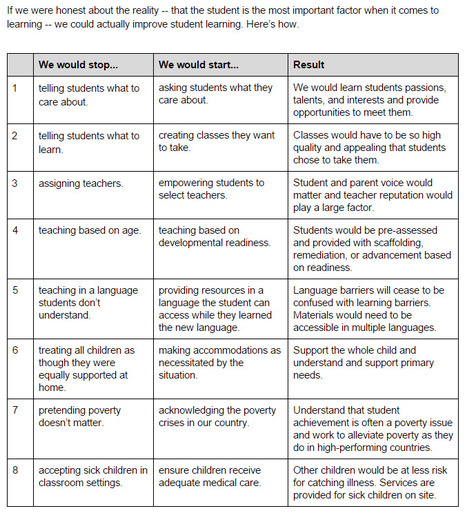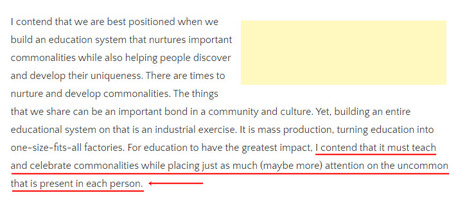Student voice matters in education today. Listening to those voices and, even more, entrusting students with decisions about the nature of their learning communities, has tremendous benefits. I am not just referring to future benefits in terms of test score results and measurable academic gains. I am also looking at the benefits of creating more equitable and humane learning communities for today. We see this happening in promising ways, but what if we saw it even more? What if we found ways to persistently engage students in tackling some of education’s greatest challenges and pursuing some of its greatest opportunities? What if the students had more room to imagine the possibilities and to pursue them?
Learn more:
http://www.scoop.it/t/21st-century-learning-and-teaching/?tag=students+voice
https://gustmees.wordpress.com/2014/05/29/practice-put-students-in-the-drivers-seat-how-to/
https://gustmees.wordpress.com/2014/10/03/design-the-learning-of-your-learners-students-ideas/



 Your new post is loading...
Your new post is loading...














Despite the fact that the purpose of education is theoretically for the betterment of the students, they are often absent at the conversations about education that affect them the most. This year, the nonprofit Student Voice aimed to change that with the first ever student-led education summit - “The State and Future of Student Rights.”.
The students and other education stakeholders at the summit gathered to discuss the rights they believe all students deserve and how to integrate these rights in schools across the country.